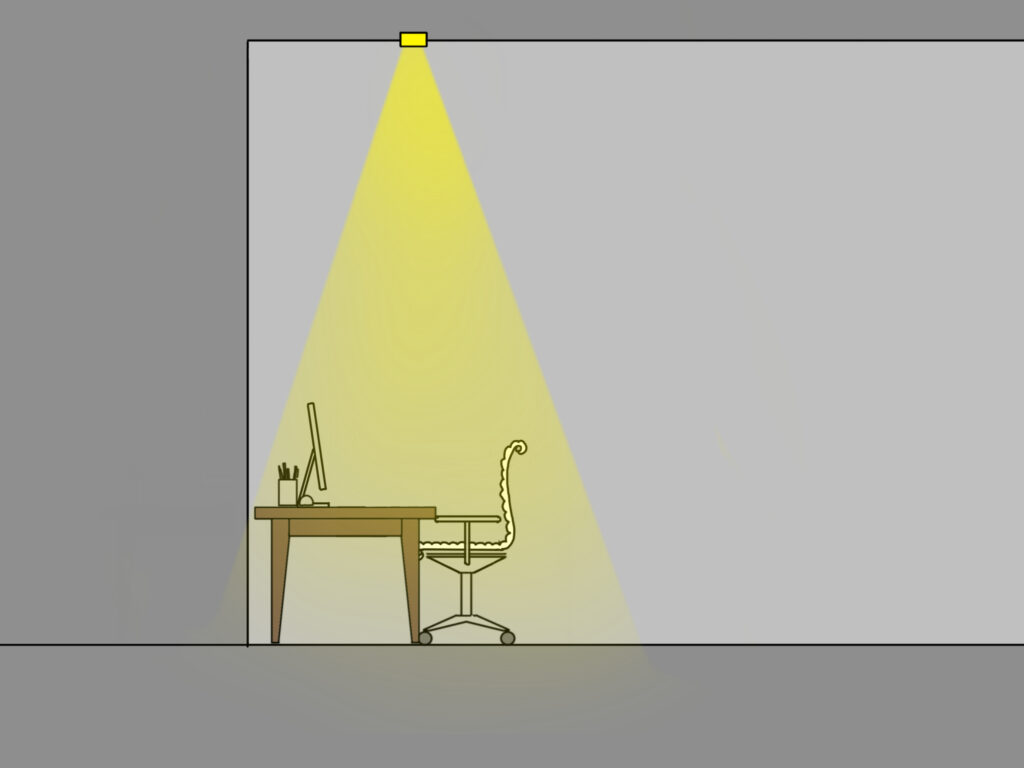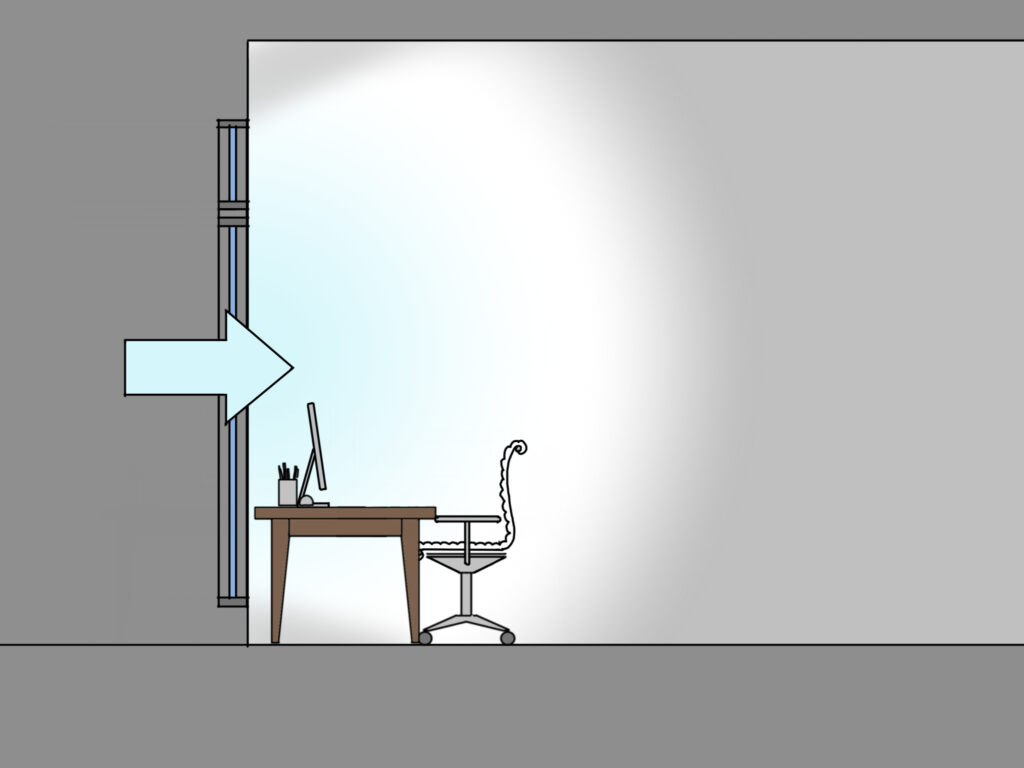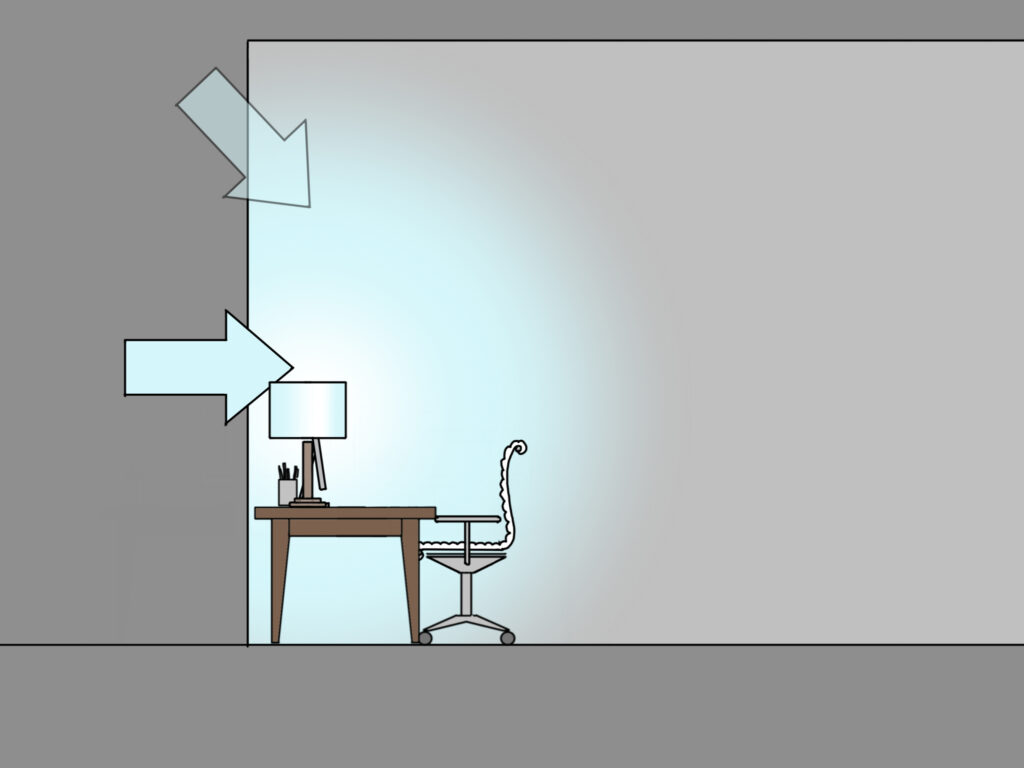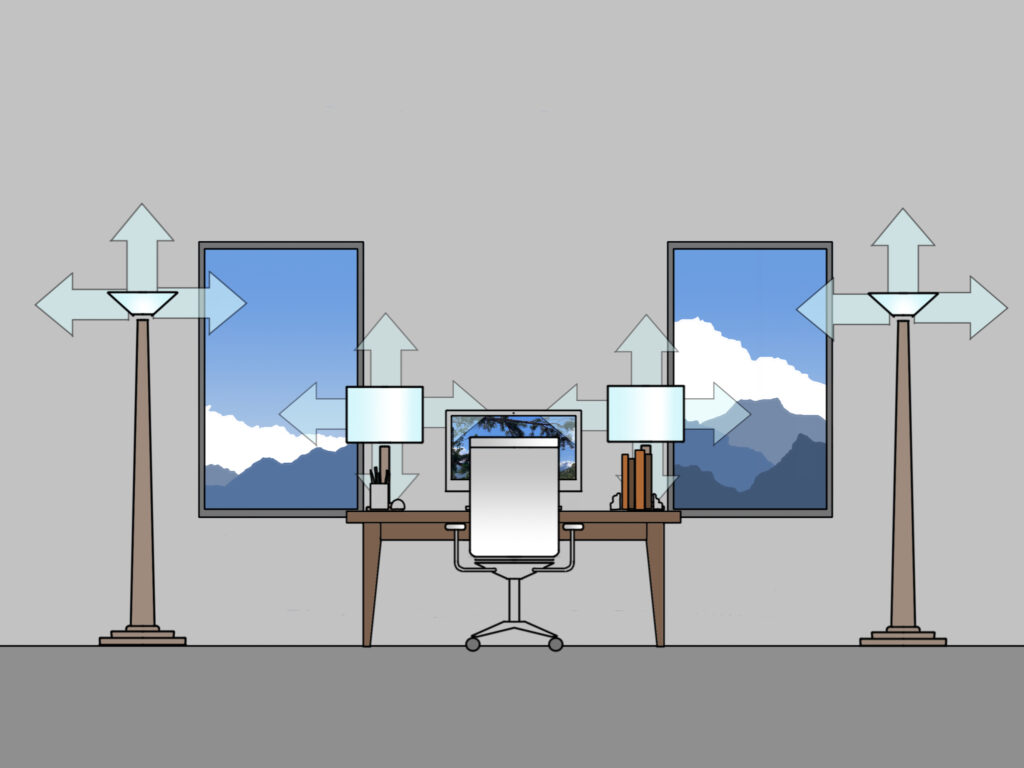I could make this my shortest blog post yet: the 1THING I recommend for home office lighting that does not require an electrician is to simply add a pair of table lamps to your work surface. The end.
Explaining my reasoning might take a few more words and conceptually mirrors my recommendation for hard-wired new build solutions for offices. Our bodies are built to work outdoors, and the more we work indoors the more problems we create for ourselves. I have seen articles on posture and ergonomics for work; I have a sit/stand adjustable desk to keep me from sitting all day long; there are apps to remind you to talk a walk now and then. Sitting in one place all day long is just not that great a lifestyle, even if your chair is awesome and your air-conditioning always working. But what about light?
When the pandemic began I saw plenty of advice for making a home office work better. Buy a Zoom headset. Convert a closet. Stage a background. Block out distractions. But what about light?
We see home offices on plans from clients every day. There are small gaming suites, large wood-paneled executive offices, modern minimalist spaces, and every style imaginable of places to work at home. But what about light?

As I sketched through my investigation, it occurred to me that the views I used in my previous post on hard-wired lighting for the home office showed only one perspective, let’s call it a front view. This angle was helpful in explaining the solution, but I realized that a side-view might better explain why a pair of table lamps is my go-to solution for plug-in lighting in my own office.
The big arrows in the sketch above indicate the direction and relative quantity of light that will enter our eyes if we set up our desk under a shady tree outdoors. Our heads block light from behind us, but light from directly ahead of us is allowed to enter our eyes without interruption. To test this theory, go outside right now and look straight out away from you. Do you see anything? If the answer is yes, then light is bouncing off of something and coming directly into your eyes. It might be sky if you live in the countryside, or it might be natural light bouncing off your neighbor’s house if you live in town. Either way, the light coming into your eyes is coming directly at you- and it is natural light.
Here’s what seems to be the solution for lighting in most home offices:

Light from above, light from above, light from above. This seems to be the 1THING we do in every room and in every home. And it is the one thing our eyes are specifically designed to block out, the one thing our bodies are specifically designed to ignore.
So let’s imagine we have a nice wall of windows in front of our desk instead of a solid, blank wall.

Ah. That’s more like it. We have strong light coming at us just the way our eyes like it. If you are lucky enough to work in front of a wall of windows, you may not need anything else. In fact, you may need shades to keep from being blinded. If you do not have a wall of windows, the next best thing might be a pair of ordinary table lamps. Not task lamps which direct light down onto the desk, but table lamps like you might use in a living room.

Lamps with soft shades bounce light off of the walls, light the desk, and softly illuminate your face. This happens to be better for Zoom calls, too (you can read more about that in a previous post with some pretty scary Zoom screenshots). It may not be as good as a window, but it will help you feel more alert and light your work, too.
Okay, this wasn’t the shortest blog post ever. But you could pretty much skip to the short paragraph above and get the job done. Sometimes lighting is not really that complicated. Thank goodness, because sometimes getting the right light in the right place at the right time is hard enough that people pay us to do it for them. 😉
And one more thing…
While you’re at it, consider adding a few more lamps to the office. These could be table lamps, or floor lamps, or those 1990’s torchiere lamps that graced every college apartment for a decade. When used in addition to table lamps on the desk, these can help fill out the “sky” a bit and make your space just a bit more like working under a shady tree. And that’s a win.

